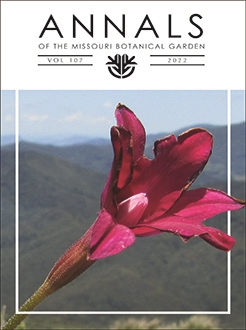Endemism is one of the most important concepts in biogeography and is often used to guide biodiversity conservation, yet our understanding of the determinants of endemism in many biodiverse tropical regions is limited. This is true for western Central Africa, a region with one of the highest levels of plant diversity in tropical Africa, where endemism is poorly documented. This study examines the Gabonese Area of Endemism (GAE) and explores the main characteristics and determinants of its vascular plant endemism with regard to taxonomy, growth form, habitat, distribution, and range size. We compiled a comprehensive, verified specimen database of vascular plant taxa restricted to the GAE, comprising 19,876 occurrences of 1145 species and infraspecific taxa, and we characterized the habitat and habit for each taxon. We then calculated the proportion of taxa in the regional flora that are endemic to the GAE. A Wilcoxon rank-sum test was used to investigate range size among endemic taxa exhibiting different growth forms, and Fisher exact tests were used to explore the association between their habit and habitat, and to test the distribution of these attributes among higher-level taxa and growth forms compared to patterns in the regional flora as a whole. We found that endemic taxa represent ca. 13% of the GAE flora, and that the rate of endemism varies considerably among taxonomic groups and growth forms. Endemism is highest among shrubs (22%) and lowest in herbs (8%), especially monocotyledons (e.g., 5% among Poales). Most endemic taxa grow preferentially in forest habitats, the dominant vegetation type of the region. Endemic trees, which structure forest ecosystems, have significantly larger ranges than endemic herbs, climbers, and shrubs. About 17% of the flora of Gabon is endemic or subendemic to the country. Our results show that the dispersal capacity of taxa and the biogeographical history of the region appear to be critical factors in explaining differences in the rate of endemism among growth forms and taxonomic groups. Our findings also highlight the benefits of carefully building a comprehensive and verified database for studying rare and range-restricted plants, and they underscore the necessity to strengthen botanical exploration throughout western Central Africa in order to develop improved and better-informed conservation strategies.
How to translate text using browser tools
31 January 2022
Characteristics and Determinants of Endemic Plant Taxa in the Gabonese Area of Endemism
Nicolas Texier,
Olivier Lachenaud,
Archange Boupoya,
Ehoarn Bidault,
Geoffrey Fadeur,
Olivier Hardy,
Porter P. Lowry II,
Tariq Stévart
ACCESS THE FULL ARTICLE
biodiversity
dispersal
Gabon
growth form
Lower Guinea
rate of endemism
taxonomy





